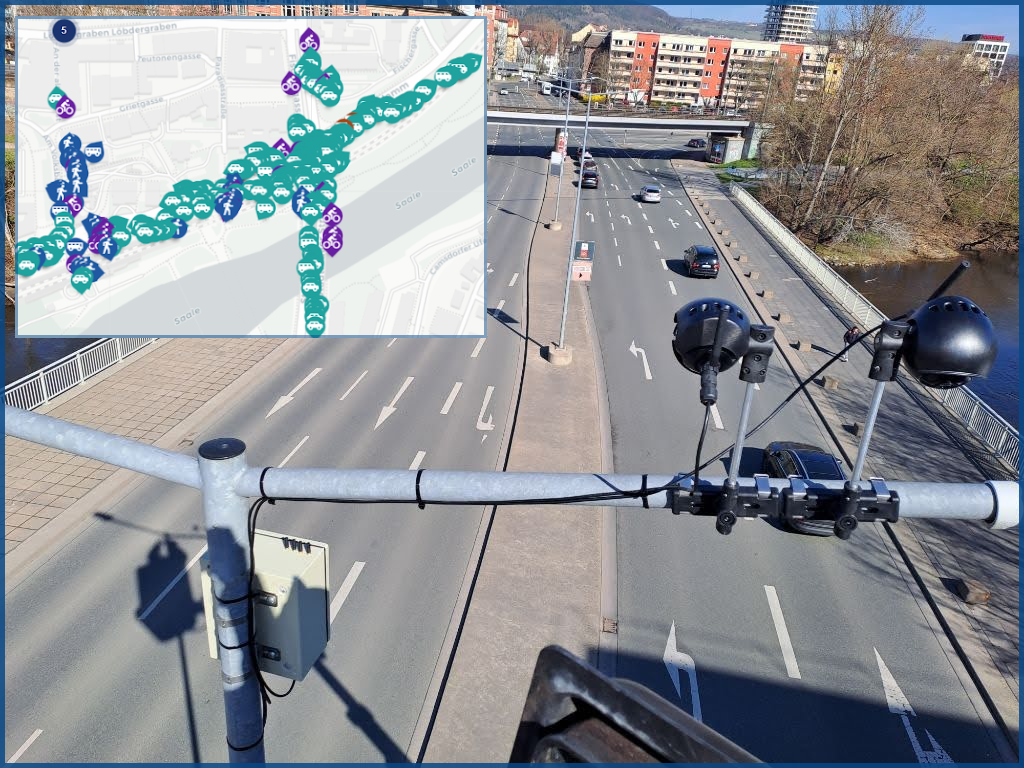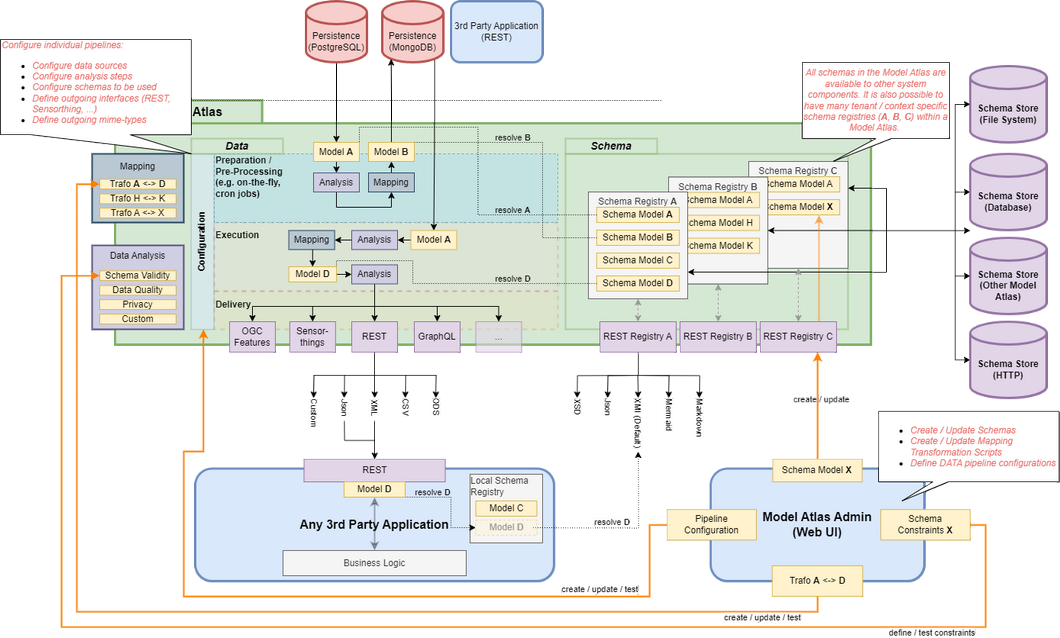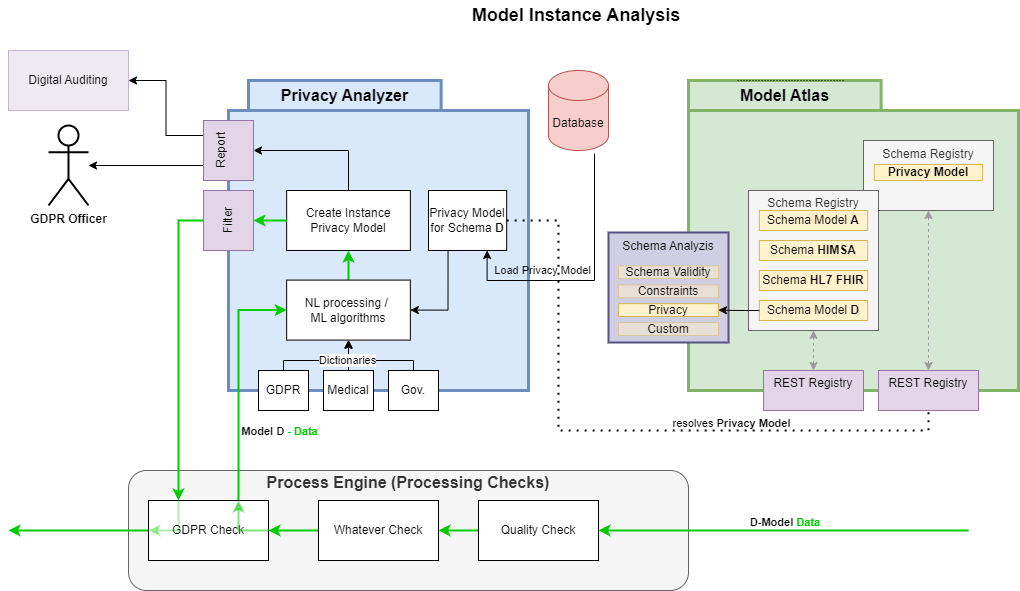
About Us
Data In Motion is a small software development company based in Jena, Germany, focused on smart data modelling and data interoperability. We use data and process modelling to enhance synergies between technical and non-technical spheres, following one goal: To address every challenge with a holistic and sustainable solution.
Our company was founded in 2010 and has since grown into a cutting edge technology and knowledge provider for IoT, Smart City solutions, machine learning and digital transformation processes – serving mostly public entities, B2B clients and NGOs. Being actively involved in federally funded research and piloting projects across various industries, we are proud to have built a highly dynamic team with a multidisciplinary scope, encompassing software architecture, development, consulting expertise, data science, astrophysics, social sciences and humanities.
Our Vision
We believe in Open Source as a way to provide digital enhancement for everyone. Both our CEOs are longtime open source evangelists and actively engaged in various community projects, thus committing our solutions to unfold lasting value.
By developing purpose driven and longtime-sustainable solutions for various challenges we want to improve people’s lives directly and with lasting impact. We want to unleash the potential of urban data to make interactions between citizens and administrations easier, increase data transparency and accessibility, make traffic safer and more efficient and transform city infrastructures into healthier and climate friendly environments.
Our Solutions
Urban Data Platform
Urban data platforms are at the heart of modern smart city infrastructures. As data hubs, they provide internal and external stakeholders with the data they need for their work or interests. Additionally, they enable comprehensive data queries in terms of data transparency, enable clear processing via dashboards and can thus become powerful tools for internal data management and increasing efficiency in entire process chains.
We offer a comprehensive solution for setting up urban data platforms – tailored to the requirements of smart city environments. Our architecture is based on the principles of modularity, expandability and open source. The core elements of our data platform architectures are the SensiNact data broker, our connected Model Atlas and the DAANSE dashboard. As a service-oriented data hub, the data broker controls the collection and distribution of all integrated sensor data, while the model atlas ensures the readability and processing compatibility of a wide variety of data structures. Thanks to the modular and expandable structure, additional services can be connected depending on the requirements or complexity level and scaled to the depth of the mapped data structures. The connected data is finally displayed in a fully configurable dashboard interface.
The result is a flexible smart city solution that is easy to configure, maintain and – if desired – can be fully managed by the end user. It can be used independently of any system, does not create any additional dependencies, ensures maximum interoperability and prevents the creation of data silos through stringent modeling.
The following video showcases the creation of an Urban Data Dashboard for soil moisture sensors.
IoT Sensor Integration and Model User Interface

Distributed sensors are the sources of data streams and translate physical processes as data into digital applications. They are the cornerstone of countless smart city use cases.
We model existing sensor networks for integration into existing smart city infrastructures or support the development of new sensor networks. In order to facilitate the modeling of data platform structures for the coordination offices and end users of our customers, we configure a Model User Interface that provides a low-code user environment. All common standards from the fields of environmental sensors, traffic or energy management such as KML, RDF, VDV (IBIS-IP), OCIT, NGSI (Fiware) or OGC (SensorThings, Features) are supported.
Our Technology
SensiNact Databroker

The sensiNact technology consists of a software platform enabling the collection, processing and redistribution of any data relevant to improving the quality of life of urban citizens. It allows programming of interfaces with different modes of access to data (on-demand, periodic, historic, etc.) and application development and deployment to easily and rapidly build innovative applications on top of the platform. SensiNact solutions shine with plug & play-readyness, modularity, are dependable as scalable and provide easy and quick growth for IoT applications.
We develop the sensiNact technology together with our UTA-Fellows from Kentyou: https://www.urbantechnologyalliance.org/portfolio/kentyou/
Model Atlas
Our Model Atlas Technology provides an universal, modular and expendable framework for data transformation and conversion. It is our key enabler to connect data from various sources with distributed applications and let distributed components talk to each other. Key features include:
- Web-based EMF Model Registry
- Model-Isolation / Multi-Tenancy
- Plugable / extensible model analysis
- Pluggable model output formats (XMI, XSD, Json-schematics)
- Documentation generation (Diagram image, Plantuml, ODS, …)
- DCAT / RDF Support for Open Data or Dataspace registries
- Client adapter for model discovery (EMF Java, TypeScript, Python)

Use Cases
Conflict Detection
We combined a resource-efficient hardware setup with a specially trained detection algorithm to detect conflicts in road traffic – especially at accident hotspots. By combining data from optical traffic detection sensors, signal systems and position sensors (e.g. from public transport vehicles), potential conflicts between road users can be predicted in real time. For example, if turning vehicles crossing a cycle lane with poor visibility receive a green traffic signal, the system can generate a warning for every cyclist approaching the junction in certain predefined vectors, which can be played out in real time visually, acoustically or integrated into smart driver assistance systems.
TraffiCam and Signal Detection Integration
With our Traffic Signal Detection System, we provide a solution to connect traffic light systems into smart city infrastructures. By using an easy-to-maintain hardware setup, we make traffic light phases and sensor inputs readable and transferable in real time. This solution enables municipal operators to access monolithic traffic light systems, which are often equipped with proprietary software. The collected real time traffic data can be used to implement smart switching systems into existing infrastructure without having to procure new traffic control technology. By pairing this data with streams from other data sources like traffic cameras, we offer a comprehensive data suite for facilitating real time traffic monitoring or enabling smart traffic control solutions, with nearly endless use case combination possibilities.
Model Privacy Analyzer
Urban data solutions often connect data from various sources, creating the demand for a comprehensive data protection and data transparency strategy. As an innovative solution for technically supported data protection, we offer a Model Privacy Analyzer. It is a tool for digital reporting and for supporting decision-making regarding data protection measures that can be used regardless of the use case or organizational area. Employing a model-driven approach to analyze both data structures and data objects in order to examine them for data protection relevance in a context-sensitive manner, the tool creates a privacy report. Depending on the use case, this data can then be automatically provided with an access restriction, anonymized or transferred into other data protection measures.
The analyzer uses our Model Atlas technology in an innovative two-stage process: In the first step, it analyzes the schema in question in order to assess its data protection relevance. In the second step, however, it can also check all instances of the various schemas in order to verify the existence of protection-relevant data and identify additional data that has not yet been found in the schema analysis.

The result is a powerful tool that is suitable both for supporting existing data protection and data transparency measures as well as for supporting the legal requirements of the General Data Protection Regulation in areas and use cases where no off-the-shelf solutions are yet available.
